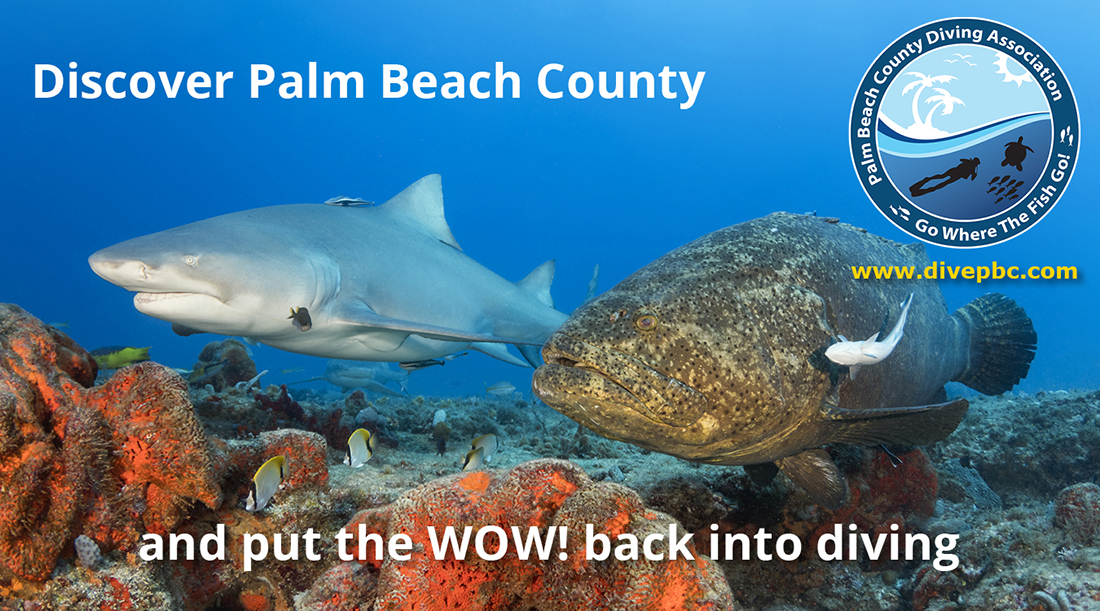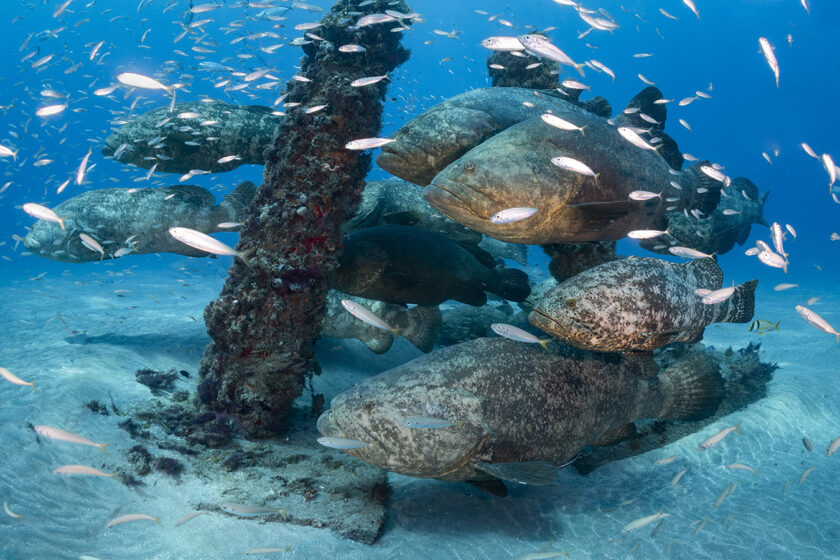Diving Jupiter off Florida’s Southeastern Coast, you never know what you might see. However, if there is one thing Jupiter is most known for it is likely going to be something big.
It was a typical morning in late August, with seas nearly flat as a mirror and the warm sun beating down. The summer heat raised a bead of sweat across my brow as I waited for the signal to dive, but no matter, because my focus was on what awaited us below the surface.
We were approximately 3.5 miles off the coast of Jupiter, Florida, at the upper end of Palm Beach County. We were preparing to dive on an artificial reef known as the Jupiter Wreck Trek. The site was created by the sinking of two freighters — the Esso Bonaire and Zion Train — along with a small barge named the Miss Jenny. These scuttled vessels are lined up in a row in 90 feet of water. But the attraction this day was not on the wrecks themselves but what congregated around them – Goliath groupers.
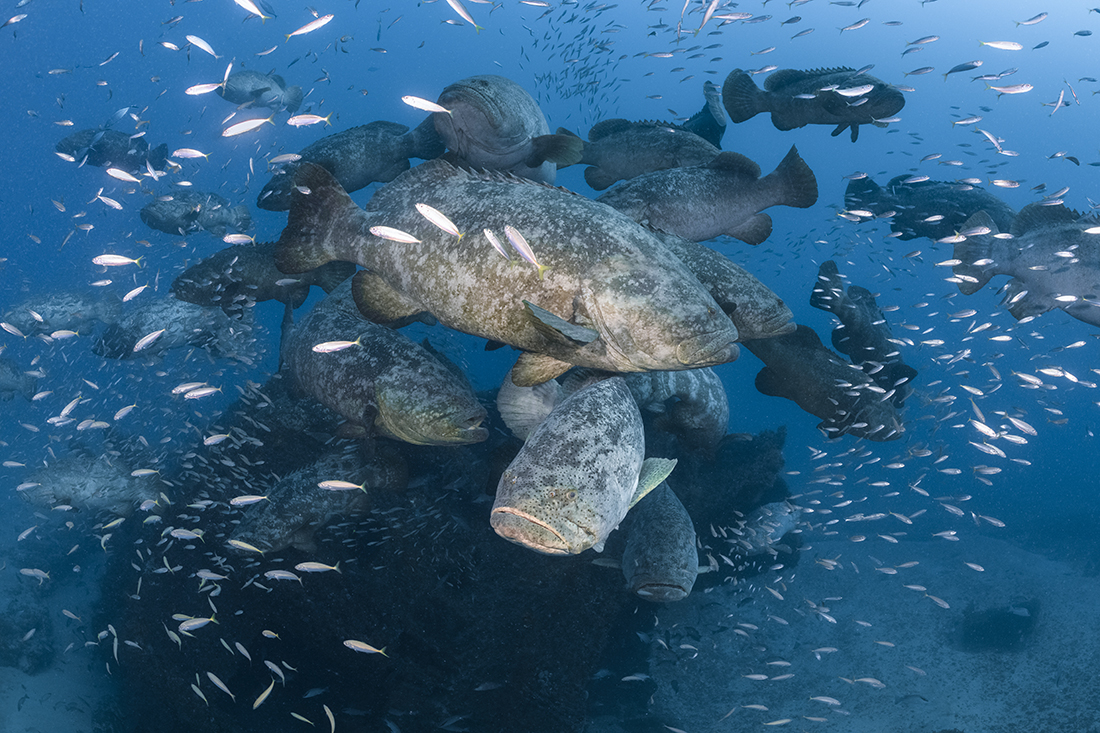
Goliath groupers (Epinephelus itajara) are the largest reef-dwelling boney fish in the Tropical Atlantic and Caribbean. A fully mature goliath can weigh as much as 500 pounds/226 kilos. Getting a close-up view of just one of these giants is a memory most will never forget.
In most dive destinations in the tropical Atlantic and Caribbean, these big fish are rare to non-existent. Not so in the waters of Palm Beach County, where at any time of the year it is quite common to see at least one or two of these behemoths lurking on a wreck or within an undercut ledge. Each year, Goliath grouper encounters shoot up in August and September, as this is the big fish’s spawning season. At that time the area’s resident Goliath population are joined by fish from other regions of Florida’s east coast, some making the migration from as far as 350 miles/560 kilometers away.
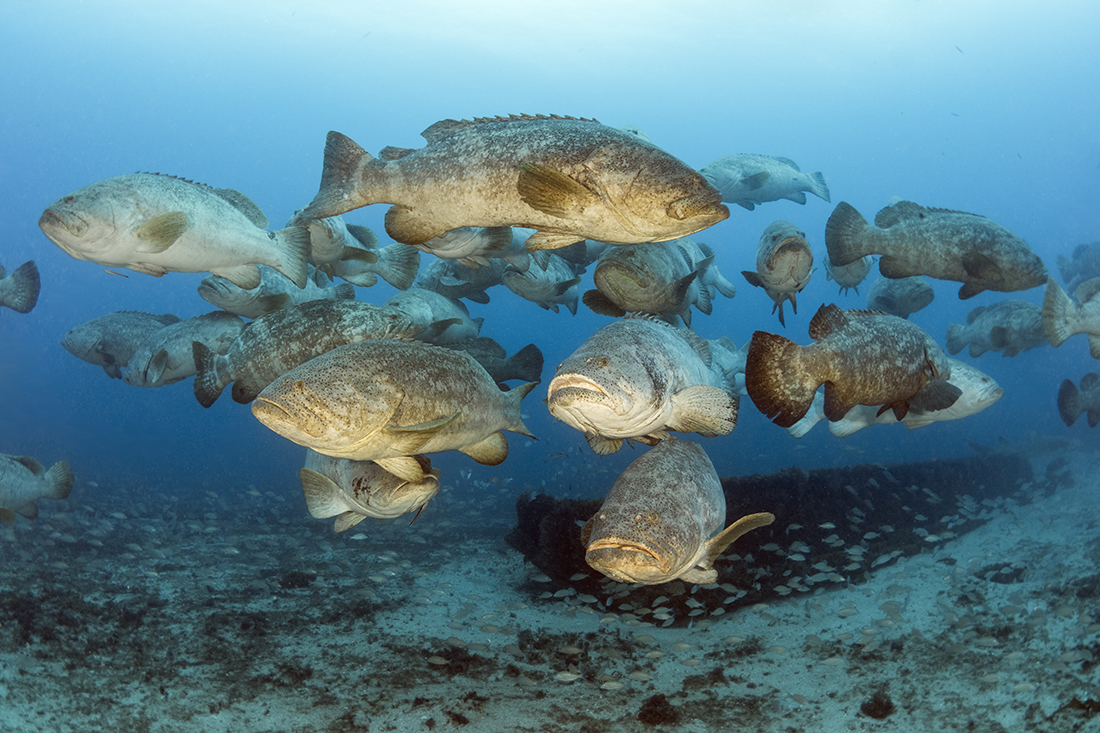
During this two-month long romance there are five key sites for spawning aggregations within easy reach of dive charters between Jupiter and Boca Raton, and three of these sites are in the Jupiter area. One site, known as the Hole-in-the–wall, is a bit too deep for most divers, as its depth profiles are in the 120–140 feet/36–42-meter range. Most divers focus on the remaining two sites, the aforementioned Jupiter Wreck Trek and the MG-111, which is an artificial reef sitting at a depth of 70 feet/21 meters.
Diving the Jupiter Wreck Trek
We began our dive with a live boat drop 300 feet south and up current of the Jupiter Wreck Trek. This allowed us ample time to descend to the bottom without overshooting the first wreck. As the profile of the Zion Train wreck came into view, we knew we were in for a good dive. Piled up around the broken remains of its stern section was a good 30 to 40 Goliaths. And even though I have made hundreds of dives with these big fish here over the past 20 years, I still find it thrilling to see them assembled like this.
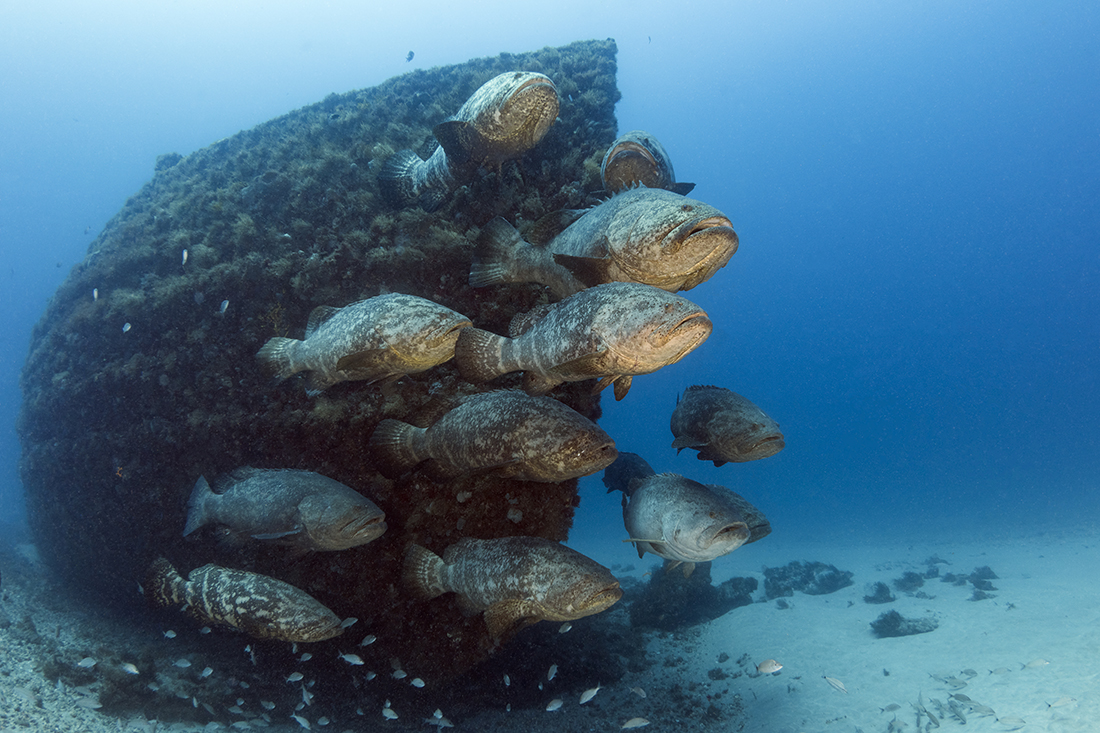
During daylight hours spawning aggregation sites such as the Jupiter Wreck Track (Zion Train / Bonaire) holds collection of colossal-size groupers that form up as a single group or a collection of subgroups hanging close to one another, with the fish milling about idly as if saying, “O.K., we’re all here, now what?”
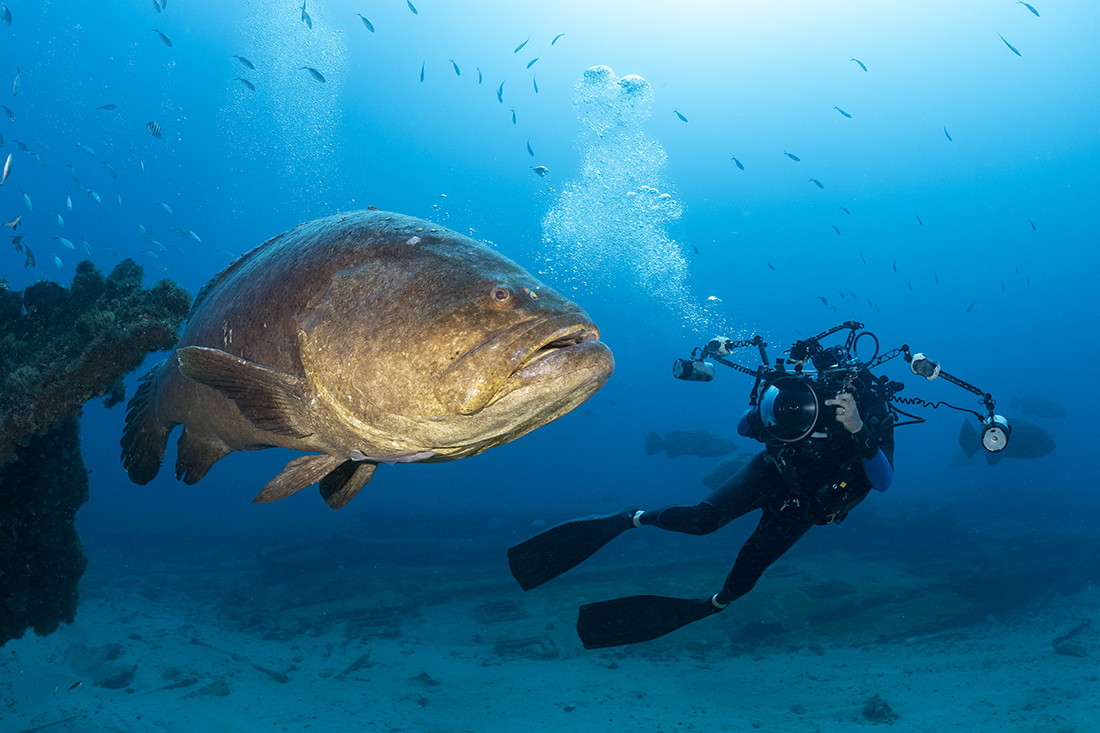
When divers encounter these groups of Goliaths, there nothing to fear. Despite their formidable size and somewhat dense demeanor, these fish are not the ferocious brutes some would like us to believe. For the most part, they can be big babies. When threatened, they sound off with a short series of loud booms accompanied with a brief body shake that makes the fish look as if it could be having a mild seizure. But this posturing is almost all bark and no bite, as Goliath groupers will typically retreat to a safer distance or might disappear in a hole in the reef or wreck the moment their bluff has been called. Even a large group of 20 or more will not stand in your way should you advance into their space. Instead, they will often break to one side or the other like a group of park pigeons.
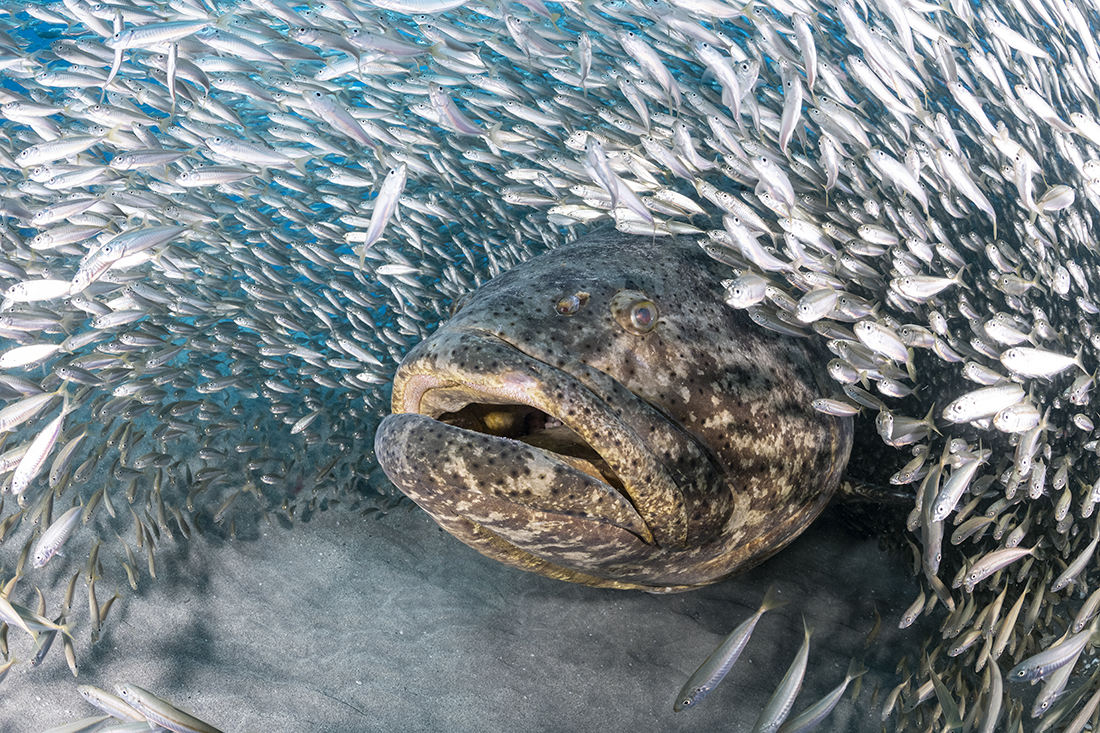
Adding to the show are shoals of small bait fish, most comprised of scad. It is presumed their purpose around the Goliaths is to feed on the eggs released by the giant groupers during spawning, the scad in turn often become prey to the wreck’s resident schools of jacks and barracuda. As the saying goes, big fish eat little fish.
Getting the Lay of the Land
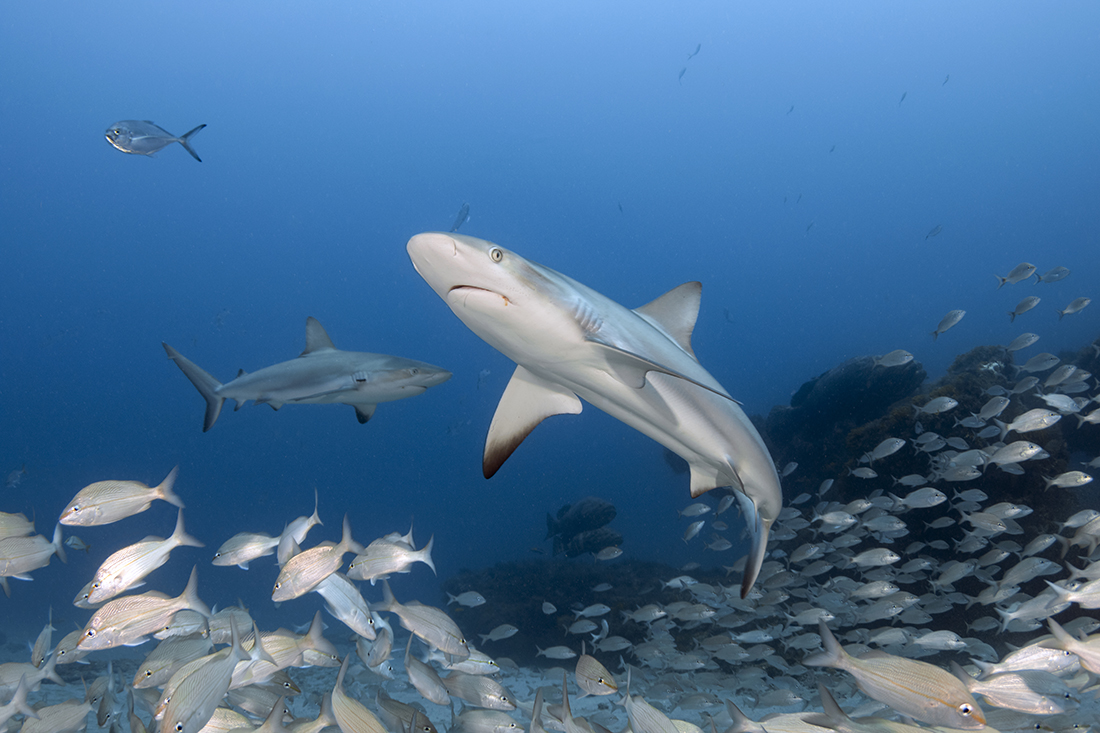
Years ago, Jupiter had a reputation for “wild and wooly” diving. The “wild” element came from the frequent presence of large marine denizens such as sea turtles, goliath groupers and sharks. The “wooly” reputation was based on the variability of the underwater environment. Because the Gulf Stream’s northerly flow is not as predictable in the waters of southern Palm Beach County, visibility and currents can be variable. In addition, there was a limited availability of dive charter vessels in years past. Today, Jupiter’s underwater landscapes are familiar ground, don’t be fooled into thinking it is any tamer.
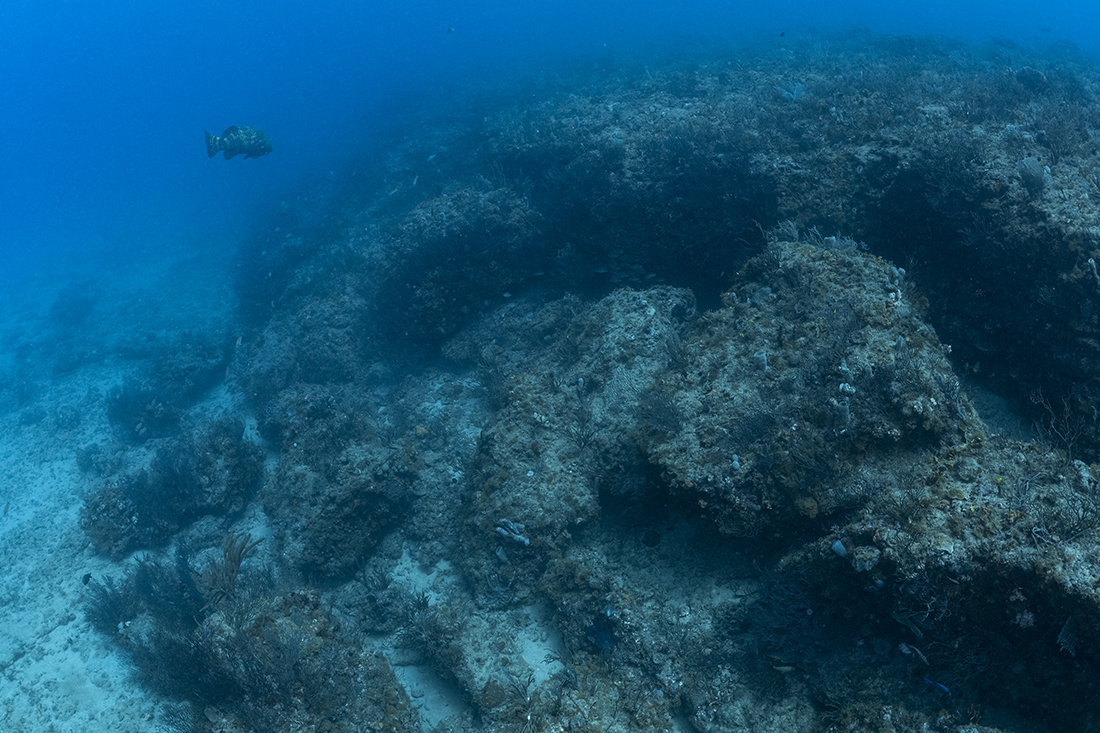
There are three factors that set Jupiter’s reef track apart from sites to the south off West Palm Beach and Boynton Beach. First, the variety of marine growth in Jupiter is more limited, and reef and wrecks are not as ornately decorated with encrusting sponges, hydra-corals and gorgonians, as they are farther south.
Second, depth profiles of over 95 percent of dive sites run deeper, with the shallowest in the 65 – 70-foot / 20-21-meter range and the deepest in the 110 to 147-foot / 33-45-meter range. A prime example is the Juno Ledge, a comprehensively large reef track that spans several miles between the Jupiter Inlet south to Juno Beach. The most pronounced part of this formation is comprised of a west-facing double shelf with a multitude of deep ledges ranging from 6 to 15 feet / 1.9-4.5 meters in height, creating profiles that range from 65 to 93 feet/20-25 meters. Dive sites like Captain Mike’s, Area 51, Scarface and Captain Kurl’s are all part of this same formation.
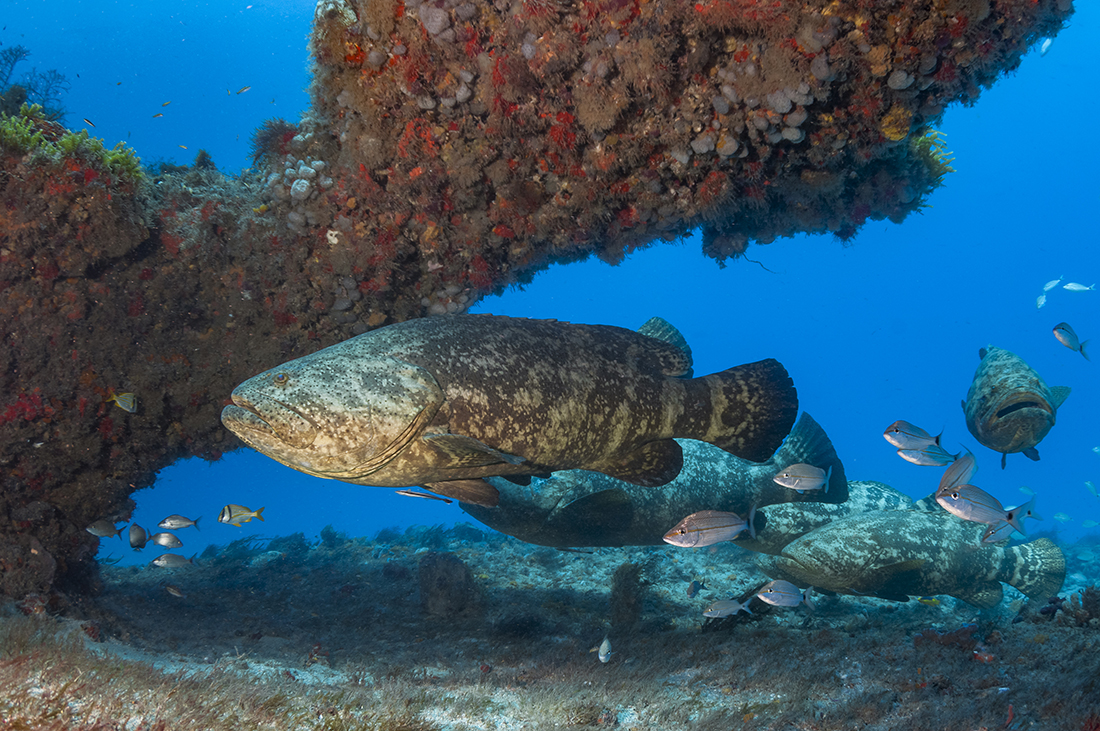
But while this dramatic topography has its own appeal, it is the third point that provides the primary attraction for diving this area. And that is the exceptional variety of charismatic megafauna that reside here.
Turtles, Turtles and More Turtles
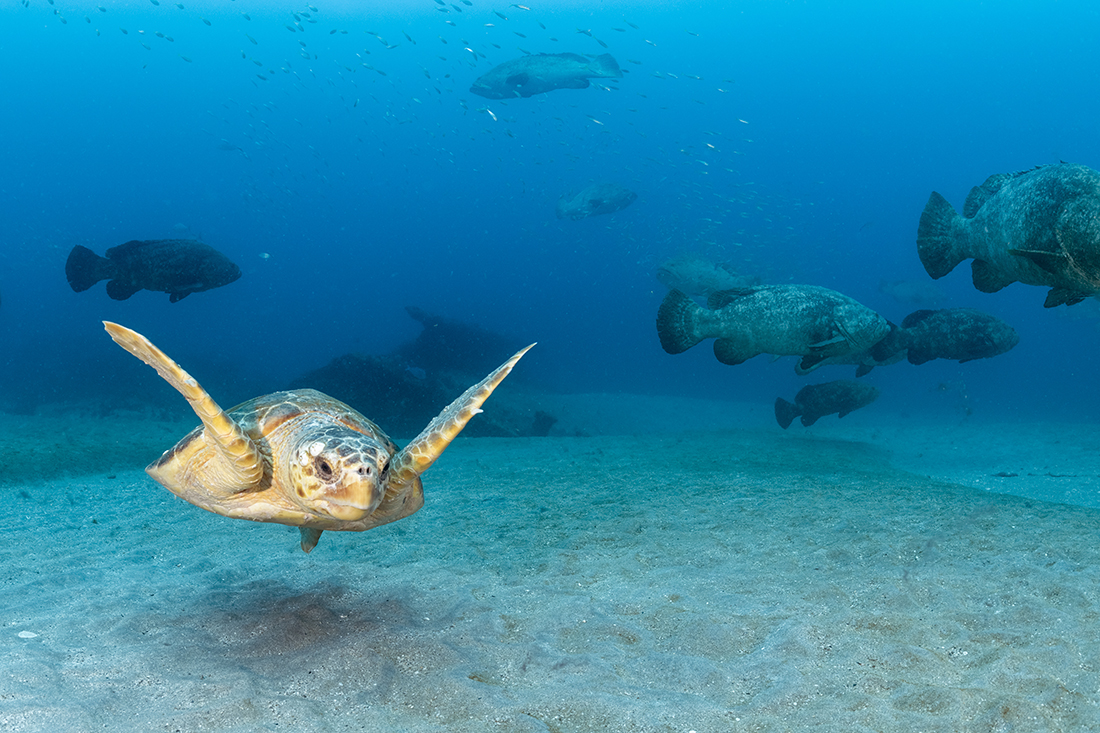
The months between April through July are the best time for encounters with sea turtles, as this is nesting season for three of the five species native to the Atlantic. The first to arrive, beginning in early March, is the leatherback (Dermochelys coriacea). At full maturity, leatherbacks are a colossus in the family of living sea turtles. They can measure up to 6 feet / 1.9 meters in length and weigh as much as 1,100 lbs. / 500 kgs. The largest leatherback recorded was 6.5 feet / 1.98 meters in length, tipped the scales at 2,019 lbs. / 915 kgs. In the water or on the beach, there is no mistaking this creature with its predominantly black body with white markings, and a teardrop-shaped leathery carapace instead of a hard shell.
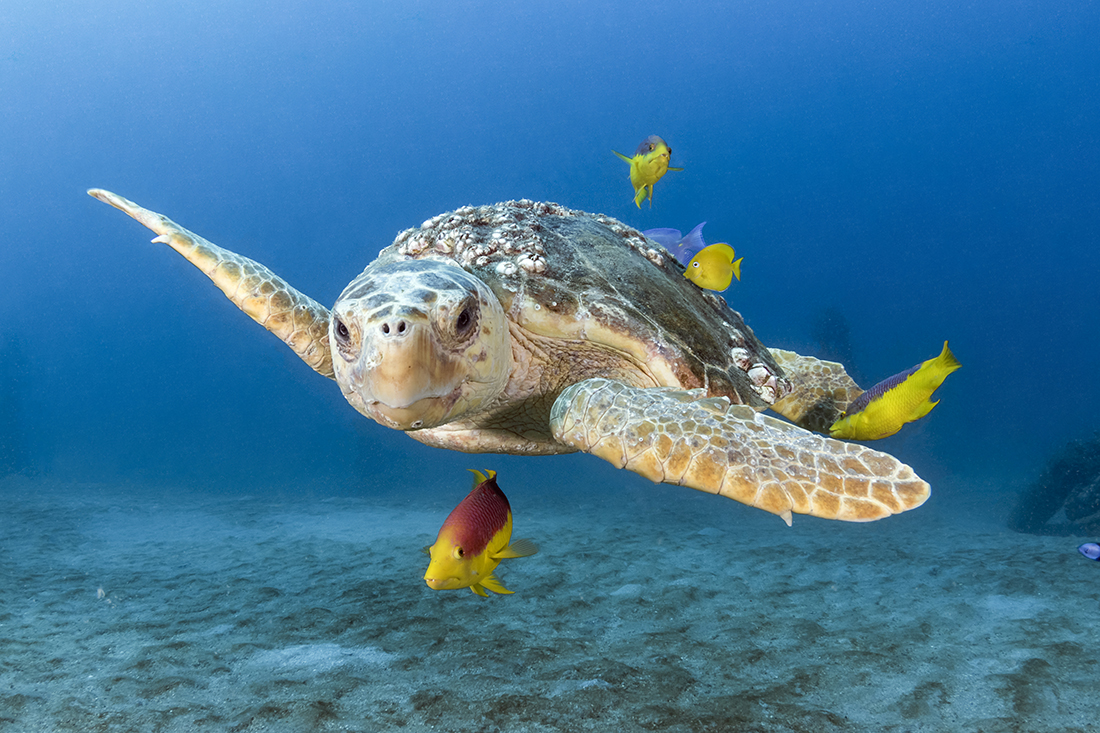
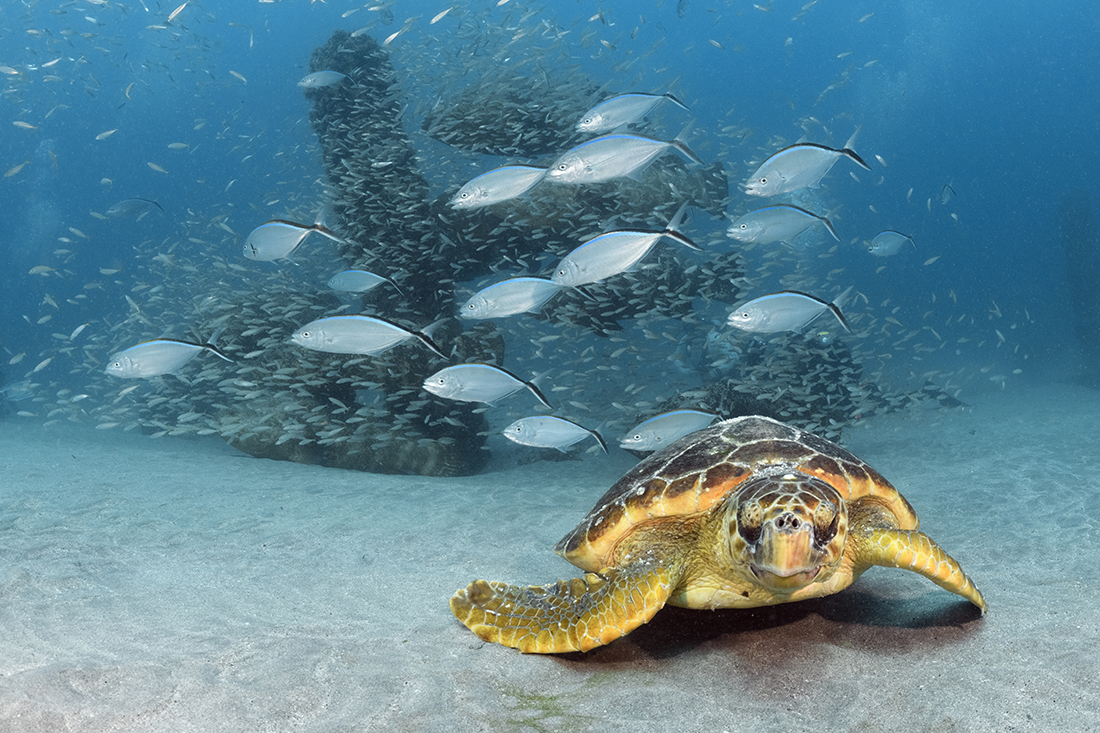
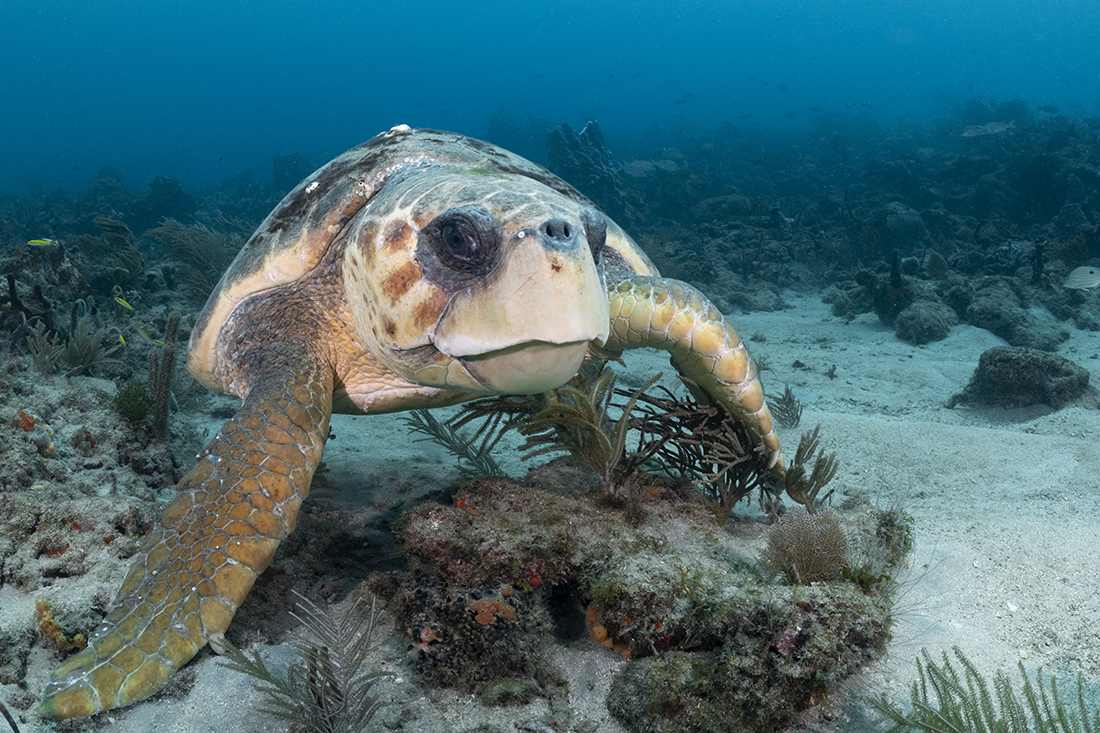
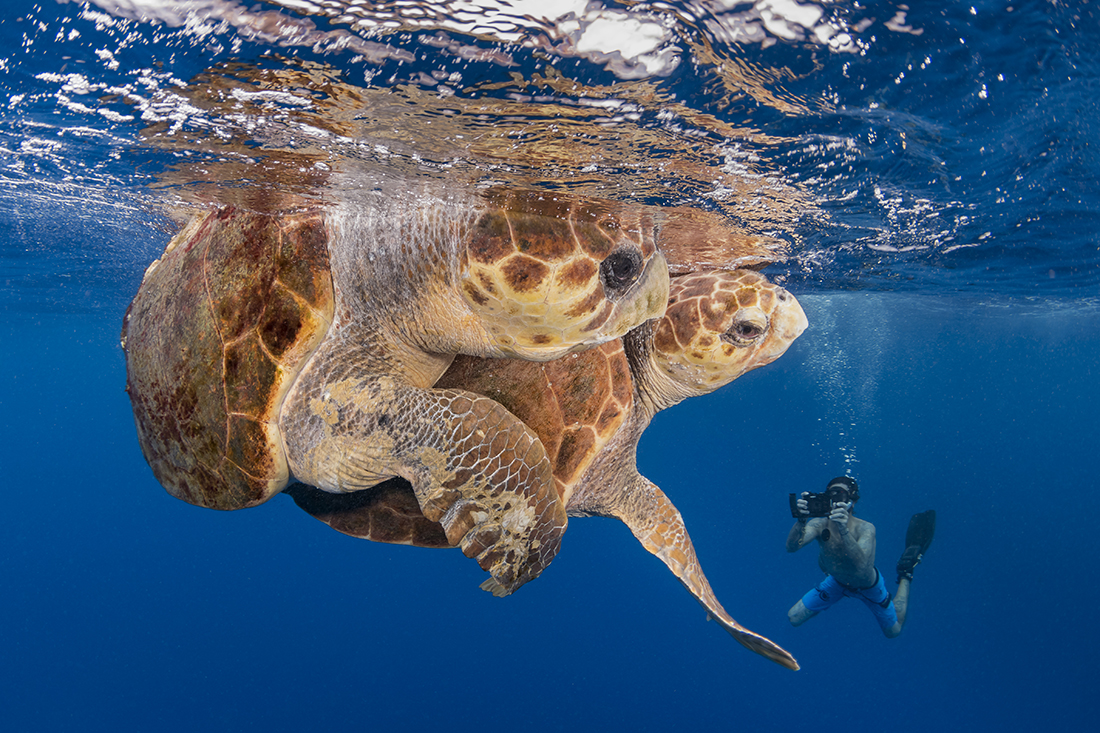
Next up is the loggerhead (Caretta caretta). Due to their robust build, adult females can measure up to 5 feet / 1.5 meters in length, weighing in at close to 500 lbs. / 226 kgs. They get their name for their large blunt, almost boxy shaped head – which looks like the end of a log. Loggerheads are the most easily recognizable sea turtle. And considering the Florida coast is one of the loggerhead’s leading reproductive grounds, it is not uncommon to spot one of these impressive creatures taking a nap on the reef or just casually passing by.
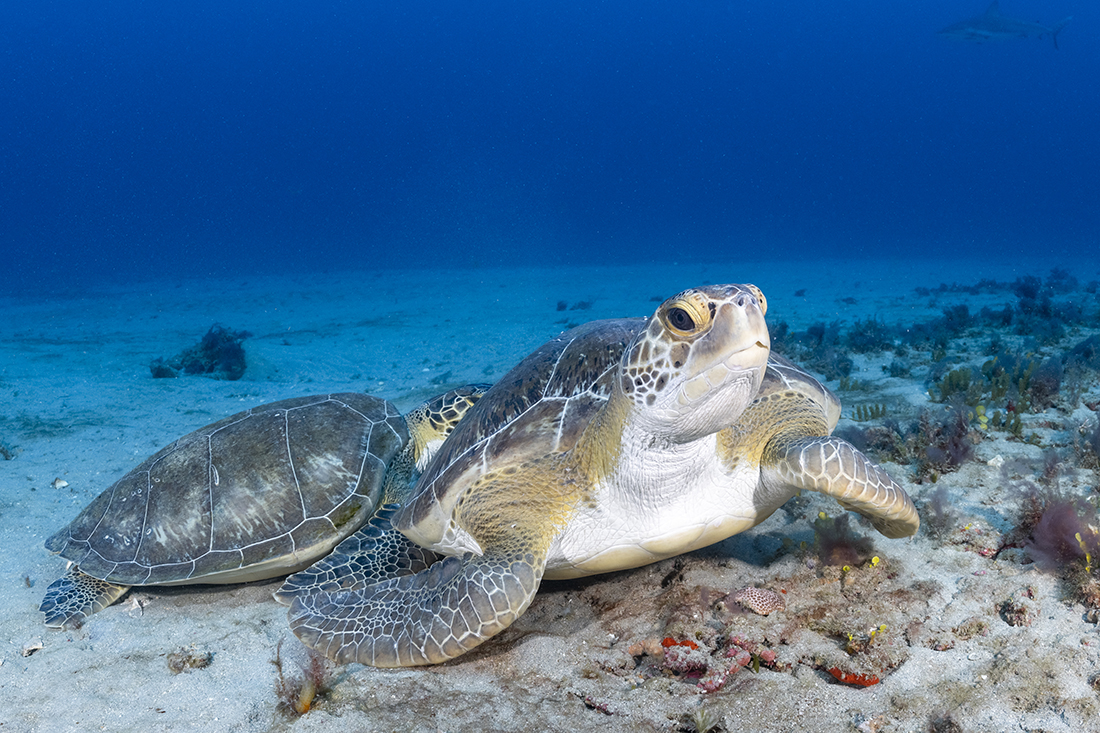
Similar in size to loggerheads, green’s (Chelonia mydas) make up the third species of sea turtles that aggregate off the coast during their spring nesting season. Best identified by their smooth, olive-brown shell marked with darker streaks and/or spots, and equally smooth bullet shaped head, adult greens are more nomadic, migrating from feeding grounds to the nesting grounds of their birth and back again. Many of the greens spotted by divers are juveniles less than two feet / 0.6 meters in length. But during their nesting season between early June to the end of September more adults are commonly encountered.
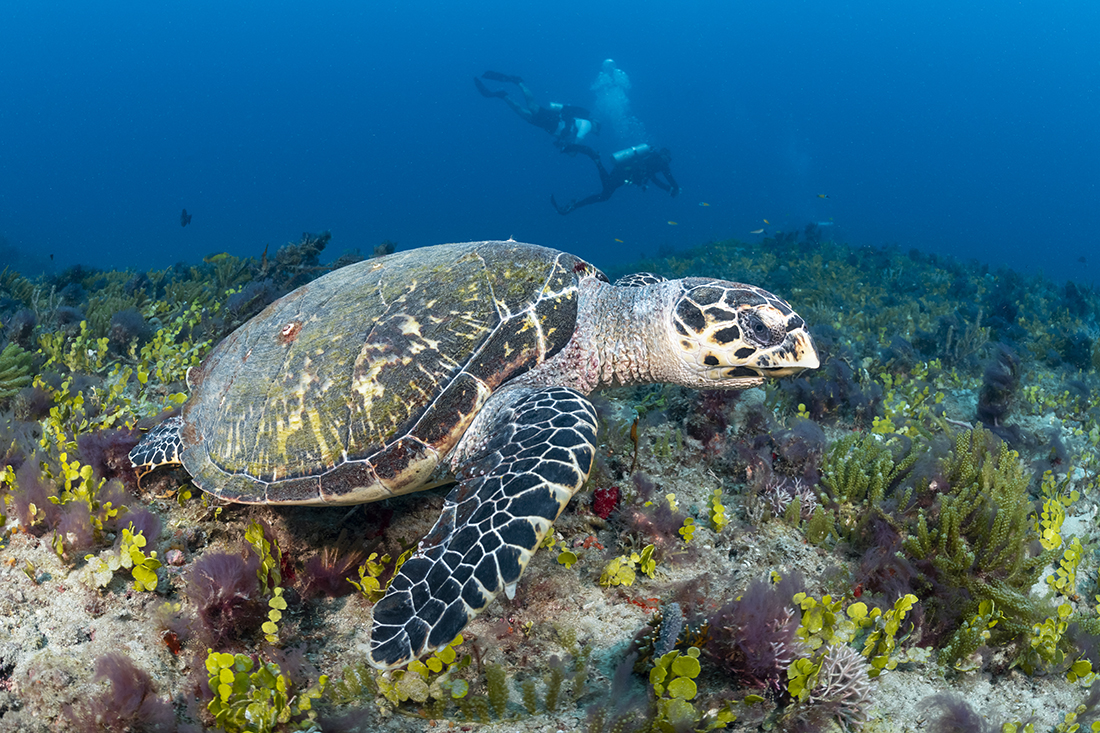
Along with loggerheads and greens, hawksbills (Eretmochelys imbricata) are a relatively common sight on Jupiter reefs. These turtles (most easily identified by their ornate shell and hawkish, hook-shaped snout) prowl the bottom looking for particular types of sponges they like to eat.
The Guys in the Grey Suits
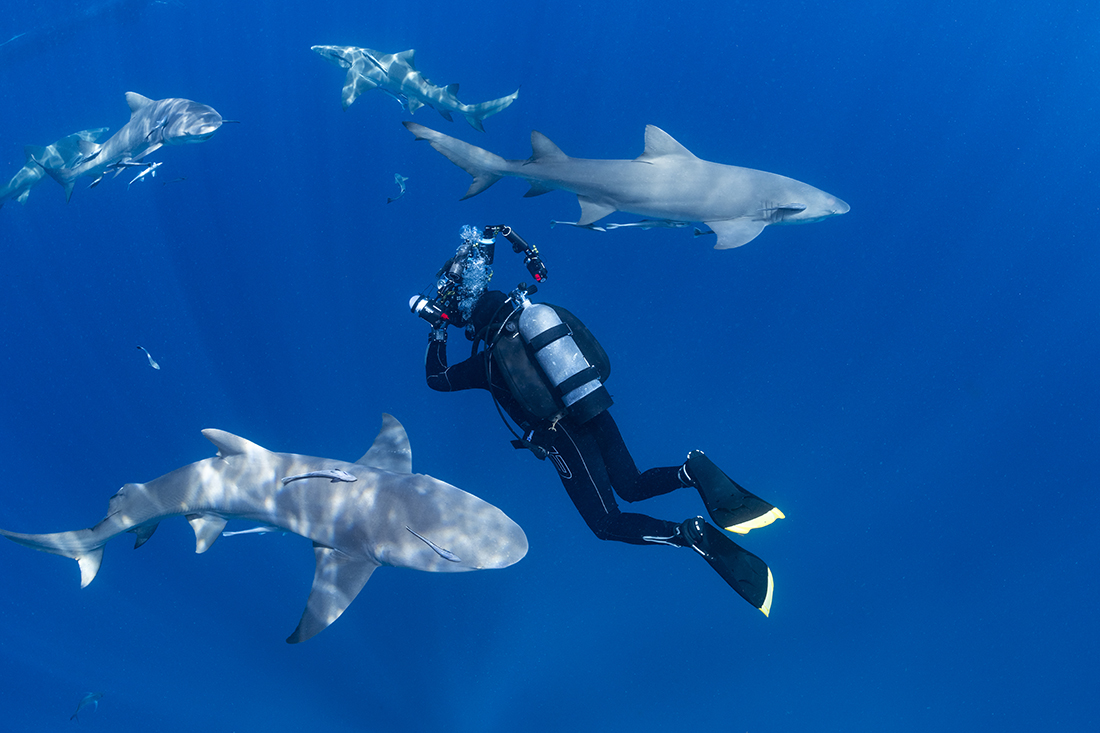
While Goliath groupers are signature sight in Jupiter, it is also a major port of call for a broad variety of the guys in the grey suits. I am not talking about attorneys, I’m talking sharks.
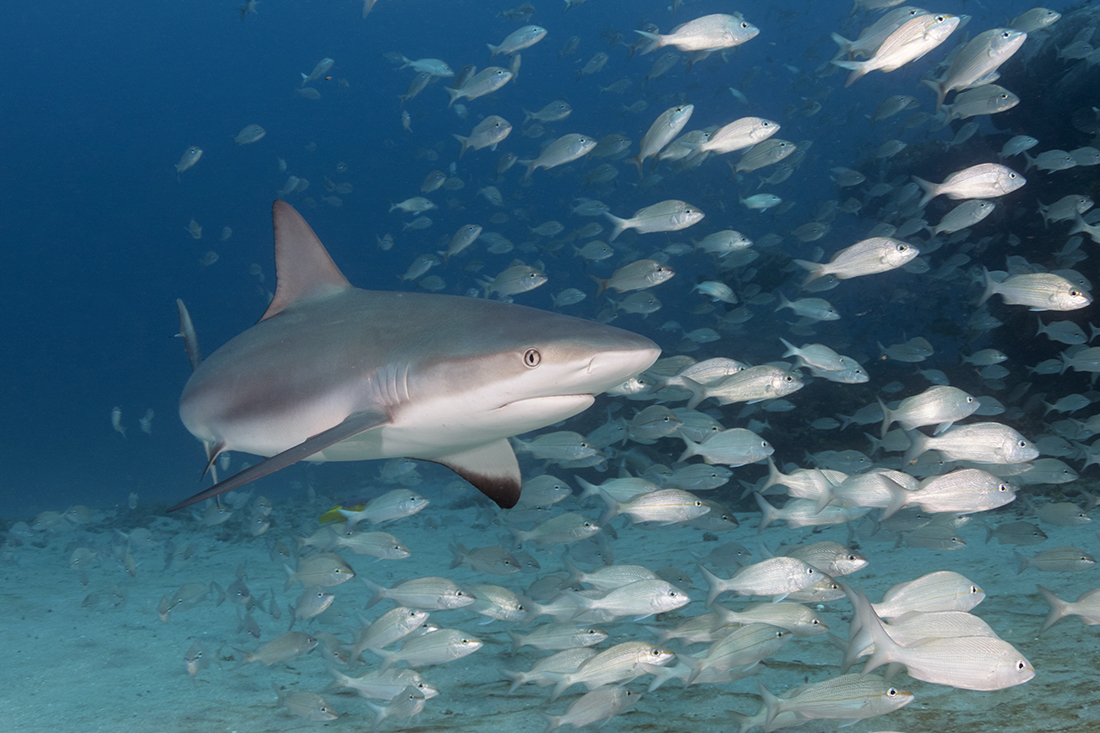
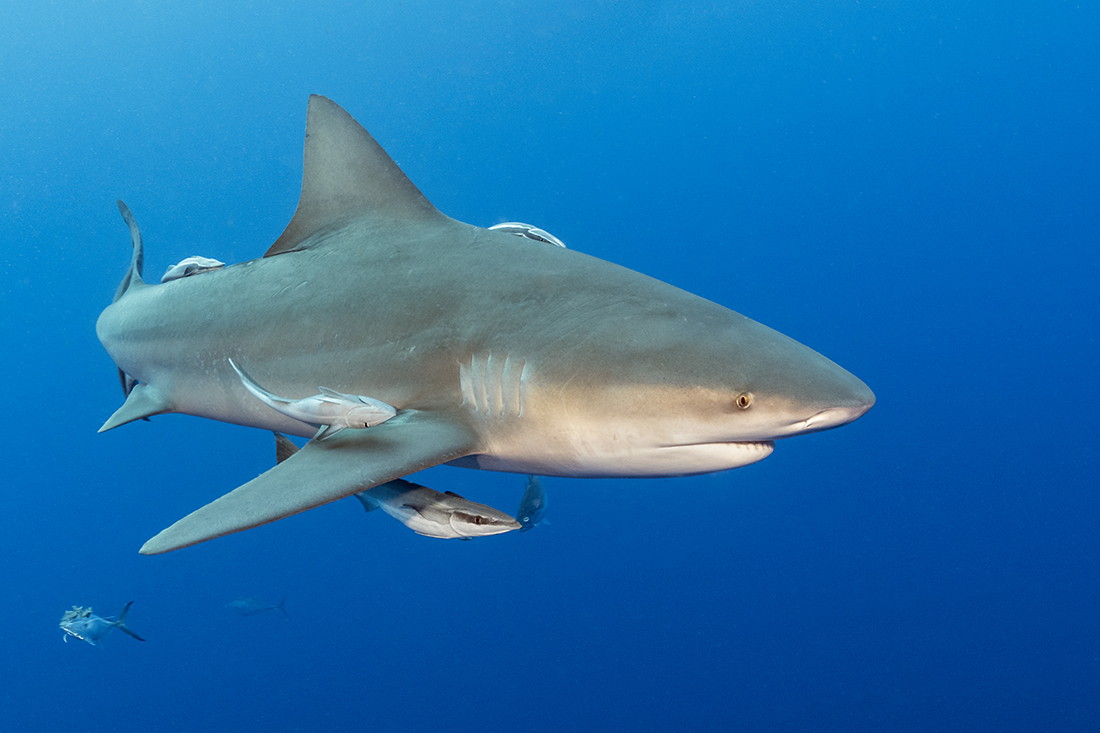
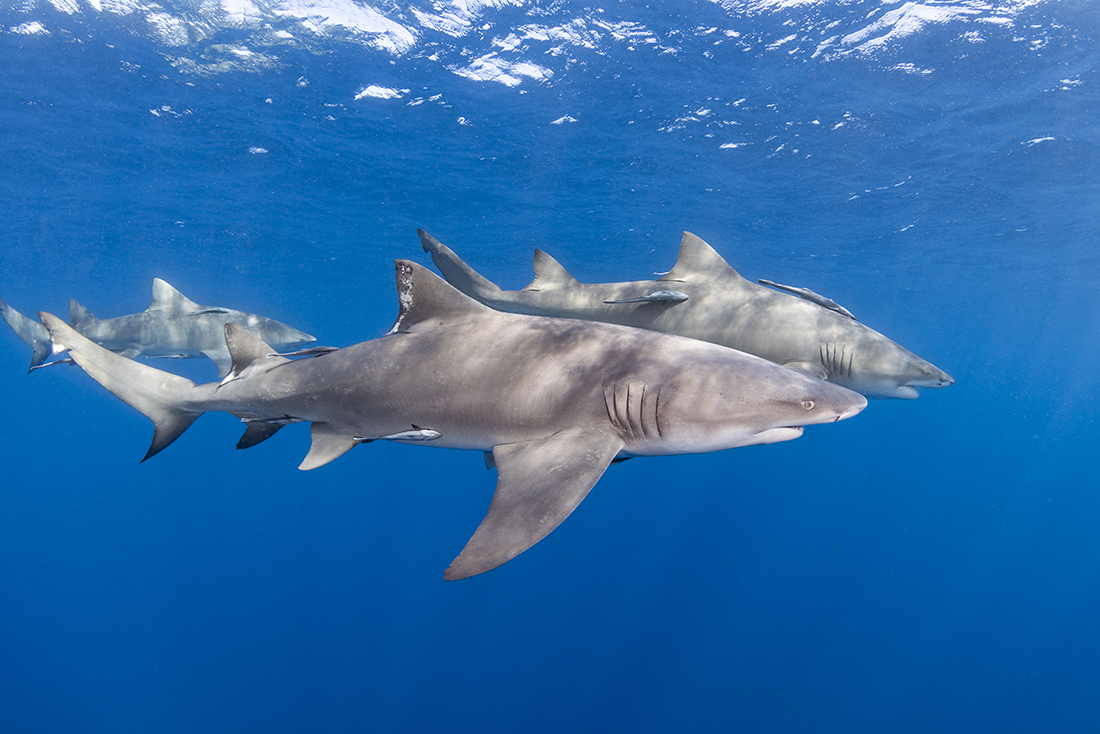
The various species of shark a diver might encounter in the waters off Jupiter can read like a party list of who’s who. In the most likely category, we begin with nurse and Caribbean reef (Carcharhinus perezi), bull (Carcharhinus leucas), and lemon (Negaprion brevirostris) sharks.
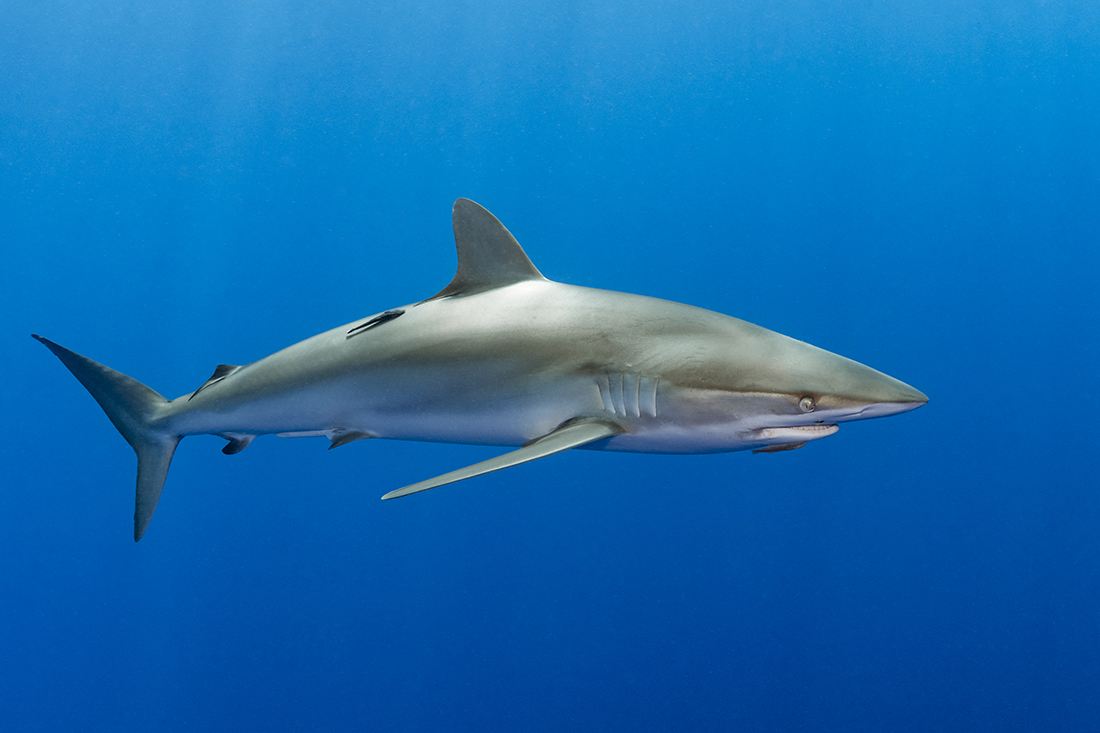
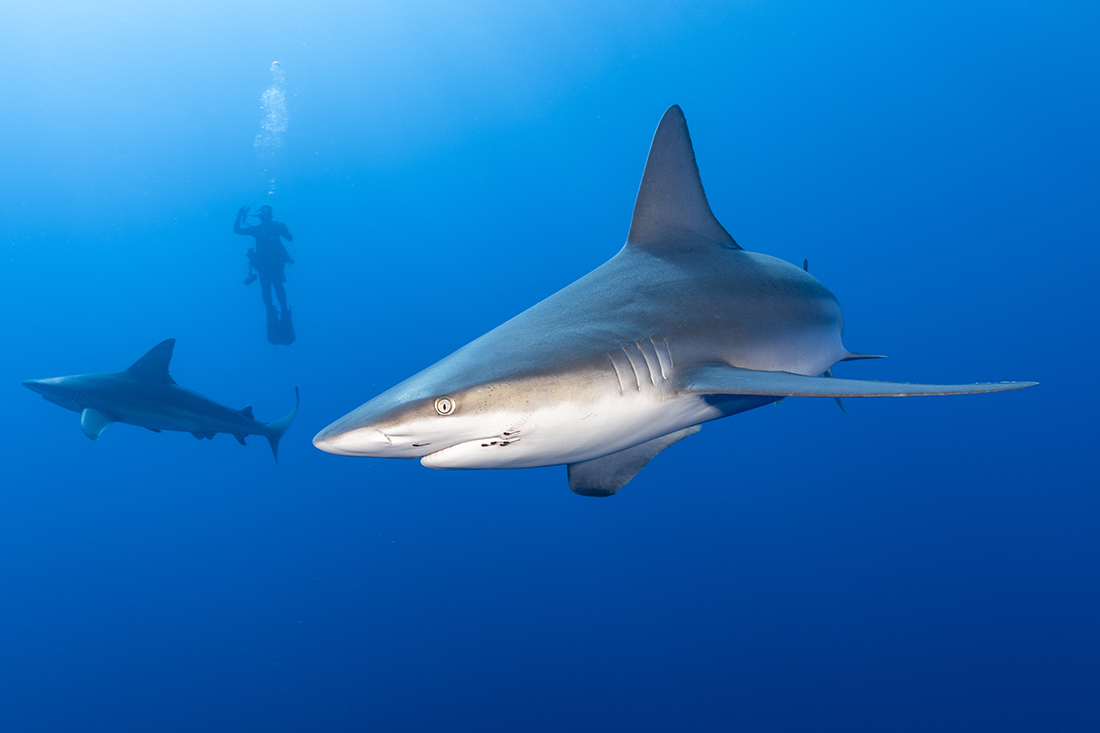
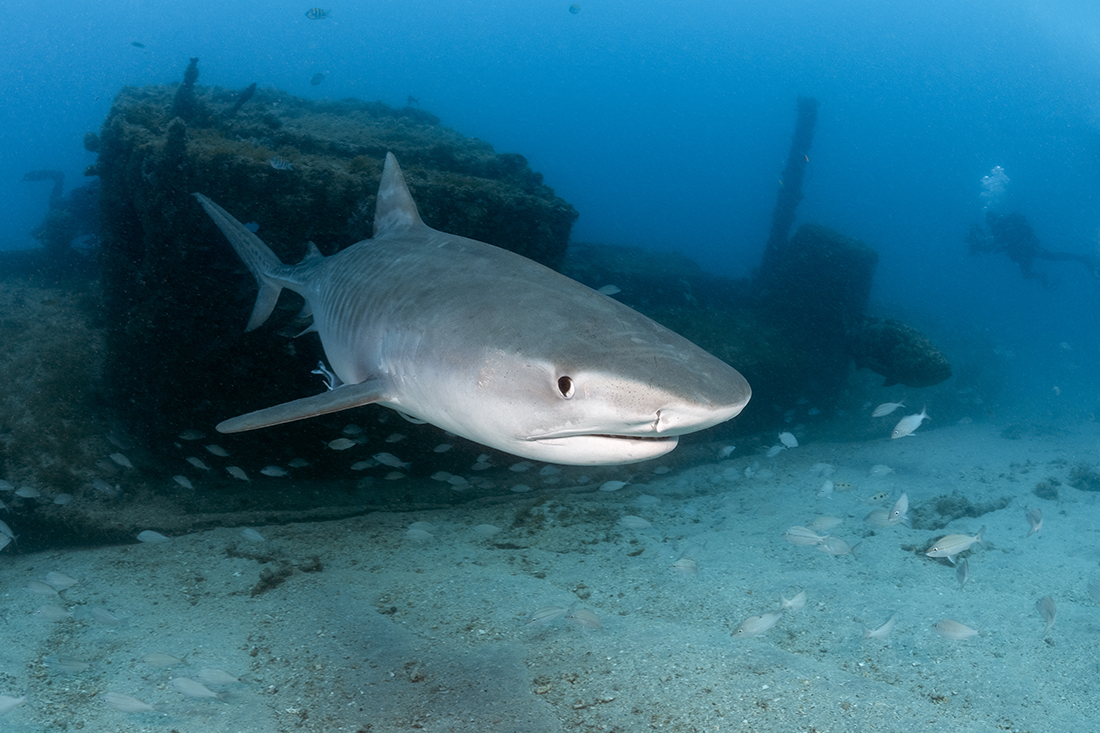
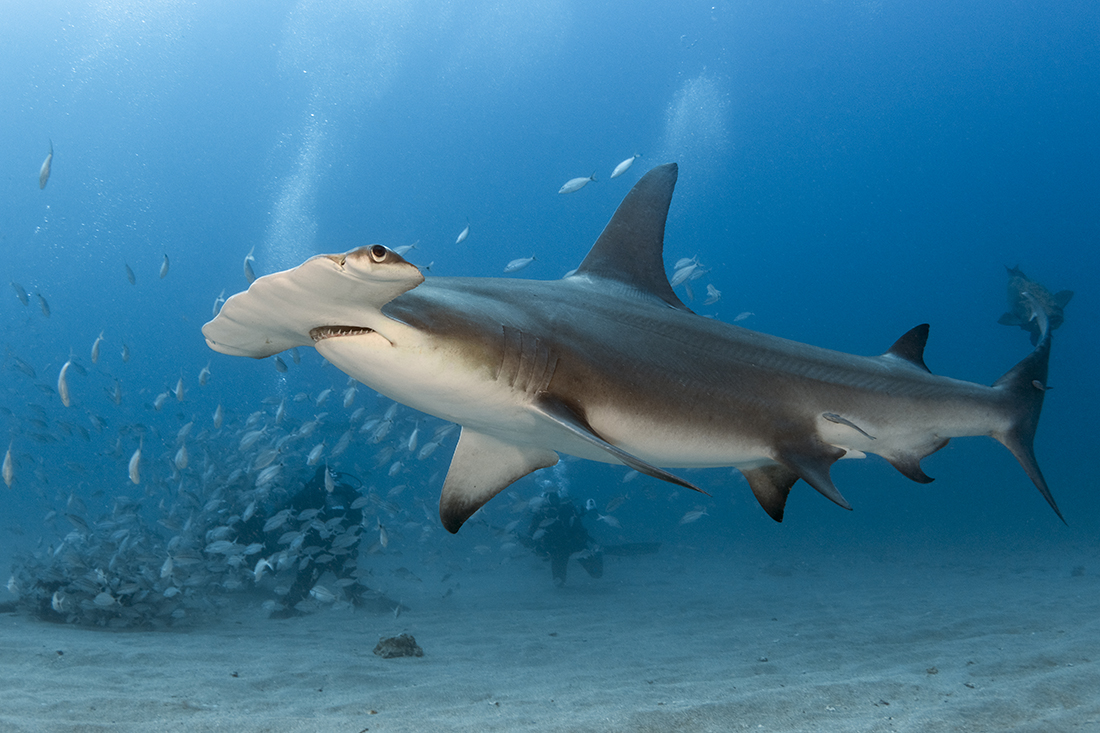
If you choose to go out with one of the local shark diving operators, the list gets even longer to include sandbar, silky, dusky, tiger (Galeocerdo cuvier) and greater hammerhead (Sphyrna mokarran) in addition to the bulls and lemons.
But the frequent visitors are far from the only sightings, as the Palm Beach Coast is no stranger to shark species like blacktip, spinner, scalloped hammerhead and the behemoth of them all – the whale shark. Additionally, great whites (Jupiter had four sitings in 2024) and the even rarer small tooth sawfish (Pristis pectinata) are sometimes seen laying out in the sand.
It is remarkable to think that this level of large marine life exists just off Florida’s southeastern shoreline. The abundance of sharks is in part linked to a geological quirk in the Continental Shelf that puts the Gulf Stream’s northerly flow closer to shore in Palm Beach than anywhere else along the North American Coast. With deep water close by, there is a greater chance of sighting open-ocean species swimming closer to shore.
Between Boynton Beach and Palm Beach, the shelf is a mere five miles / 8 kilometers wide. Journeying a little further north to Jupiter, the shelf begins to re-widen as Florida’s coastline begins to turn a little to the west. This shift in underwater topography causes fluctuations in the Gulf Stream’s passage as it skims the coast. When these shifts take place, the prevailing current may reverse course moving in a southerly direction. This may trigger an upwelling from deep water that drops bottom temperatures from the high 70’s – mid 80’s (21– 26 C) down into the low 60’s (15 C) even high 58’s (14 C). This is a temperature range preferred by a number of shark species.
The bottom line when diving Jupiter is that you never know who or what you might see. It can be as grand as seeing two to three dozen goliath groupers bunched together or something as thrilling as having an 11-12-foot hammerhead or tiger shark pass by.
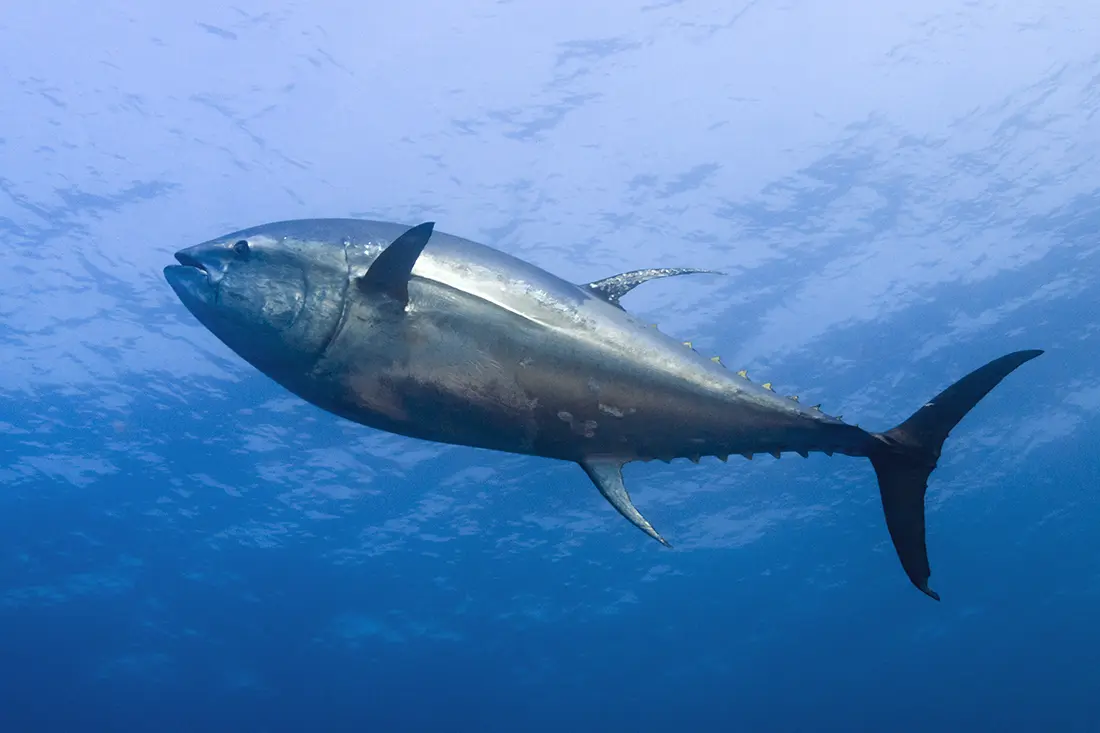
One of my personal favorite memories was having a 500-lb. Bluefin tuna do a fly-by during the shark dive. But, then again, that’s Jupiter for you.
